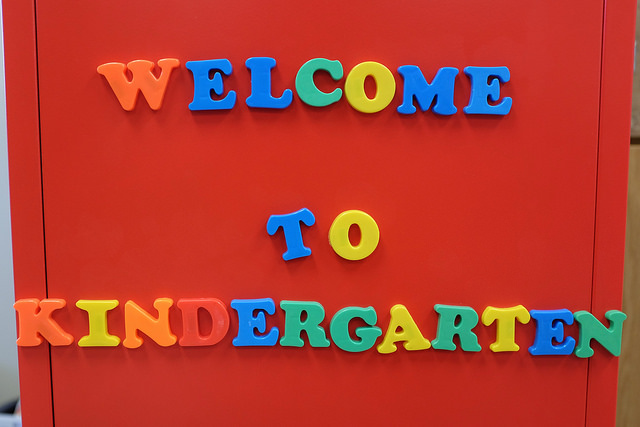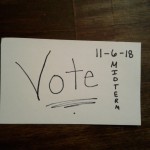“ Isn’t Kindergarten supposed to be PUN?!”
Translation: Isn’t Kindergarten is supposed to be FUN?!
The most constructive and valuable criticism I have received in my 7 years as an educator.
Why?
It was honest, genuine, and most importantly, provided by my student.
Allow me to set the stage:
It’s the first week of school, my class has settled back into the room after following clues left behind by Pete the Cat, to help students become acclimated to the school. We finish up by reading David Goes to School, and begin discussing the 3 Be’s: Be Responsible, Be Respectful, and Be Safe. These are the expectations students and staff are expected to follow in order to create a positive learning environment. Students begin sharing what types of actions demonstrate the 3 Be’s and I receive responses like, “ Pushing in your chair.” “Using your manners.” “Not telling the teacher no!”
Then a hand shoots up and with the most sincere and bit perplexed look on his face “Vinny” says, “ Isn’t Kindergarten supposed to be PUN?!”
After realizing “pun” was meant to be fun, and giggling with my assistant, over the fact I was caught off guard, I became concerned. I ran through many questions/comments in my head, “ Am I boring this student?” ,“What is fun?” ,“I thought the we were having fun!”, “What else can I do to make it fun?”.
I finally stopped the giggles and let go of my pride, and responded “What do you mean, what’s not fun about what we are doing?” “Well…., he proceeds, aren’t we supposed to be doing arts and crafts and you know playing?” I informed him, that in time we will and continued with the task at hand.
This interaction, though innocent and unintentional, has stuck with me! It’s a year later and I still go back to that interaction with “Vinny”. As I plan lessons, collaborate with peers, and work on assessments I wonder, would I make Vinny proud? Would he deem this as fun?
I am realistic in the fact that not everyday can be “arts and crafts, and you know, playing”, but I can make it feel that way. I am also aware that, though my students want/need novelty and fun I also need information to guide my instruction.
The information used to guide my instruction allows me to grow as an educator, as I implement new instructional strategies. These new strategies allow me to present content in a way that is meaningful and enjoyable for students. This information also allows me be accountable and displays my professionalism when discussing student growth/areas of improvement.
Most importantly I don’t want my students to feel as though my need (need for information) overshadows their need (fun).
Recently a colleague and I chose to pilot a new assessment, the Kindergarten Developmental Inventory (KDI) with the AZ Department of Education. Upon first diving into this accountability tool, I was pleased, because it was about play and creating, exactly the fun my students want. I am able to receive the same valuable information in a way that doesn’t drain my students, unlike other accountability tools have.
What is the big difference you ask? This accountability tool is done WITH the students, as they talk, play, and interact authentically versus being done to them, requiring them to perform for a moment in time.
As the pendulum swings in education, I think about the many “Vinny’s” in classrooms across our state/nation.
Are we filtering their needs through ours? Are we providing opportunities for “fun” (engagement), that will also allow us to show growth, and improve our instruction? How do we improve our practice, while keeping our students at the heart of it all?
After all, “Isn’t kindergarten supposed to be pun?!?!?”










Comments 3
Hello. Im a kindergarten teacher from Mexico. I teach at a public school. I learn a lot from you.
Danielle-
Thank you for posting this piece. I love that you piloted an instrument that is done WITH the students, as they talk, play, and interact authentically versus being done to them, requiring them to perform for a moment in time. Not an instrument that is done TO students, which is too often the case. Thank you for sharing what you learned from Vinny and that it has changed how you plan and prepare for instruction.
I loved this piece — thank you for sharing your experiences.
Vinny’s question to you touches on a theme that I’ve seen across many similar lower elementary school classrooms. I think it’s incredibly important for us as a community, policymakers, and educators alike to remember that students in the classroom are children first and foremost. To keep a child engaged in the classroom, finding the novelty of certain situations or creating an environment of excitement and fun is absolutely necessary. To inundate a child with material that does not allow for interaction is a sure fire way to get them unengaged and disinterested in whatever is being taught.
I am grateful for teachers like you who try to find ways to make your curriculum as “pun” as possible.